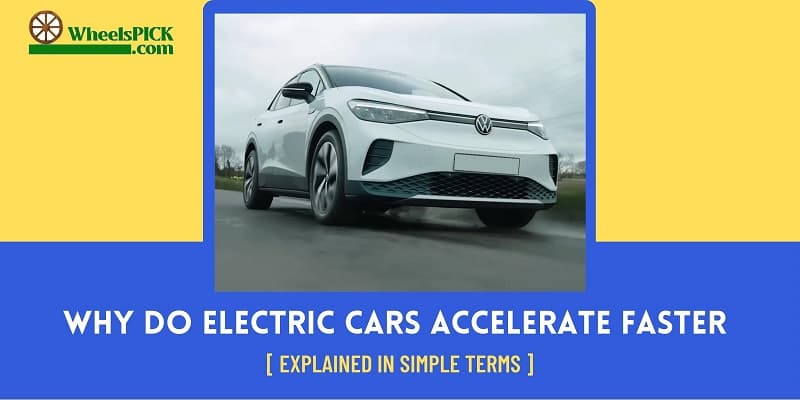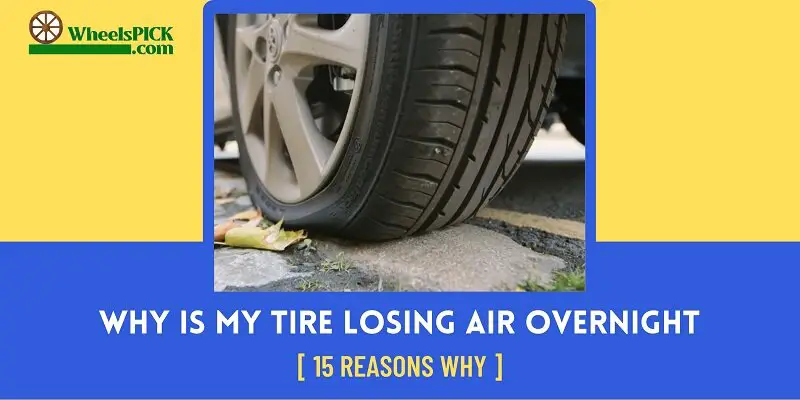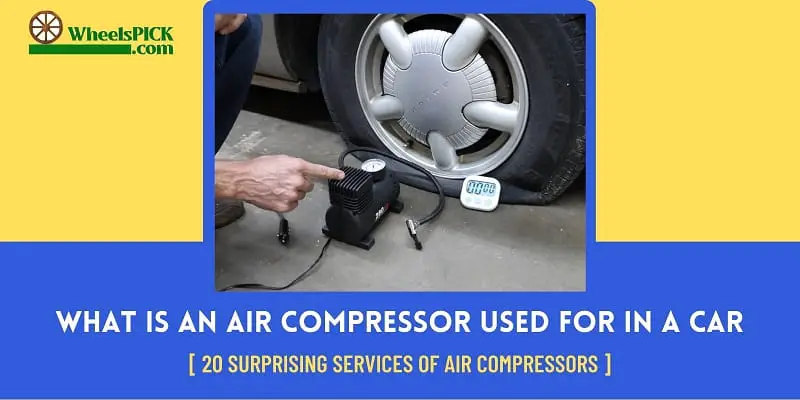The quick and steady rise of the EV market growth isn’t all fluff. However, aside from the apparent benefits, users quickly noticed that EVs are swift and in the best way. Whether it’s a drag race or if you’re revving your electric vehicle’s engine to show off – the quick acceleration feature in EVs is unparalleled. But why do electric cars accelerate faster? Ah, the billion-dollar question!
Well, you’re in luck because we will address that issue in this article and some more. So, if you’re an EV fanatic like most of the world, keep skimming and prepared to have your mind blown by today’s simpler yet intuitive innovations!
Why Do Electric Cars Accelerate Faster
We all know electric motors come with much simpler mechanics than gas-powered ones. However, besides the positive EV battery’s environmental impact, users also love their faster acceleration. The primary reason is that EVs have full torque that can force the vehicle to move even from a standstill position resulting in instant and higher acceleration.
How Do Electric Cars Accelerate Faster Than Traditional Ones?

Gas-powered engines generate a maximum horsepower of 7000 to 8000 rpm with somewhat flatter torques. Although they pose decent speeding power, they might taper off when the oxygen density deteriorates.
In retrospect, EVs have constant and instant torque available from an inertia point, regardless of the gear and speed level. This is because gas-powered vehicles generally require time to burn fuel and let the entire mechanism function in a chain of order.
Hence, the instant torque isn’t dependent on the rpm’s buildup compared to gas-powered engines. This means that EVs can generate and emit maximum speed levels even with a 0-rpm; thus, instant and higher acceleration is always on their forte, whether it’s normal cruising or driving up a hill with zero time lags for superchargers or turbos to do their job.
Moreover, whether your EV is energizing at an EV charging station or otherwise, electric powertrains get their energy from DC rather than generic gas pressure; thus, the need to shift and change gears or engine revs isn’t necessary either.
Also, did you know that the highest levels of torque needed to produce by a gas-powered vehicle are the same as that of an EV, no matter their speed range?
It’s true and quite fascinating as well. Since gas-powered cars utilize gears with lower revolutions/minute and optimized power, they can travel longer distances, especially on highways and at higher speeds. But EVs use only one gear to their total capacity to deliver what we know as – faster acceleration.
Acceleration And Torque – How Are They Related?
According to Toyota, torque is just a twisting force. For example, torque is applied once you twist the cap to open a bottle, and precisely that happens inside the motors and engines of functioning or moving cars. Torque is produced inside the motor and engines and then transmitted to the vehicle’s wheels to get the spinning and, eventually, the car moving.
Needless to say, it directly provides power to the wheel. Thus, torque is an elemental force while driving, whether an EV or a generic gas-powered car. But that’s not all. Torque can also assist heavy-duty vehicles, such as those riding uphill or towing.
What Is Instant Torque?
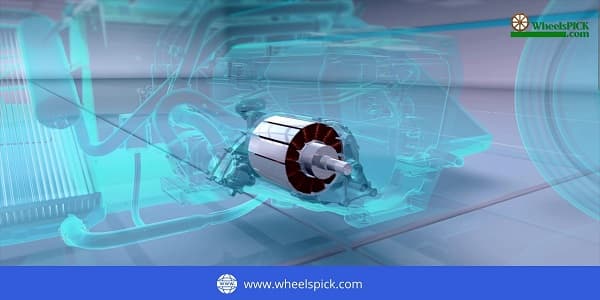
EVs generate their optimized torque in the motors, which is then delivered to the wheel instantly as the driver presses on the throttle. On the other hand, this entire chain of events might take more time than usual with gas-powered vehicles due to their complex design and functioning of the motors.
However, the most noticeable difference between the cars’ mechanisms lies in the timing and, of course, the torque itself. According to Car Throttle, this phenomenon occurs due to a deficiency of electromotive forces.
EVs utilize their batteries to transmit power to the motors producing the torque. The torque is then transferred to the wheels. But what happens when you floor the throttle? Good question. Well, the greater power you generate, the more torque you will get, and it doesn’t get any simpler than that!
Additionally, EVs produce greater electromotive forces with increasing spins, thus, reducing the overall voltage transmitted. To make it simpler, for instance, if there is 150V total power, there will be some electromotive force reverted to, perhaps, 50V; hence the overall voltage delivered is 100V.
Furthermore, only a small chunk of power produces the torque, which then travels to the wheels. So, the faster the motor spins, the greater electromotive force is produced. Even with some cut-down, the overall power could still produce maximum torque even with a standstill vehicle.
Quick Or Fast?
Based on generic racing jargon, ‘quick’ means how long a car needs to travel from one point to another, whereas ‘fast’ means the maximum speed a vehicle can sustain. Needless to say, in any drag race, fast would mean the highest speed throughout the course of a race, and quick would mean how long it took for the car to finish the laps. So, which one are EVs, quick or fast?
Well, EVs are quicker than traditional gas-powered vehicles, but they can’t necessarily travel faster than its contender. It’s a no-brainer that gas-powered cars have some leverage over EVs regarding performance, as they can sustain longer periods of speeding.
Yes, EVs produce greater torque resulting in them moving forward quickly, but that’s only because an EV motor doesn’t demand the requirements of a generic transmission. As the power instantly travels straight to the wheel, it’s ‘quicker’ to react.
In retrospect, in gas-powered cars, the power transmission route is much more complicated and not instant. Thus, the entire process takes longer, where around 15% of power is wasted, called drivetrain loss.
Horsepower And Efficiency Of EVs
Since we’re learning how EVs produce quicker torque, eventually becoming a faster ride, we need to assess their internal functioning for a better picture. Generally, EVs utilize greater horsepower, too, as they have lesser functioning and moving parts; thus, they’re highly efficient.
In this case, efficiency is equivalent to horsepower and vice versa. EVs, in general, are therefore much cheaper to operate as they reduce direct maintenance costs.
The straightforward powertrain and instantaneous torque are two key factors that enhance EV’s potential to shoot faster than gas-powered cars. This is why Tesla can acquire zero-60 times within mere seconds.
Efficiency, Power, And Range
It’s no wonder EVs come with top-tier convenience, starting from portable EV chargers to utilizing energy efficiently – they do it all. But there’s more to it. For instance, if an EV battery runs on 70kWh, it can travel approximately 250miles based on the speed level.
The 70kWh energy is about two gallons of gas which could enable 100miles if a car possesses an overall efficiency of 50mpg. However, for the same length of travel, an EV would only require approximately 5 gallons of gas as around three-quarters of liquid fuel goes to waste in the form of noise and thermal energy. Thus, around 25% will be transmitted to the wheels.
This is somewhat of an underlying relationship that most users are unaware of when they’re eyeing or driving an EV. Gas-powered vehicles come with mediocre to underwhelming fuel economy. Thus, they can’t travel far unless it’s with a large and full tank of gas.
However, the same case doesn’t persist with EVs. Even with their swift riding culture, EVs can suffer too, as with the approximate 25% loss; it’s understandable that if more considerable power is required, the EV will need a bigger battery.
So, More Battery Means More Power?
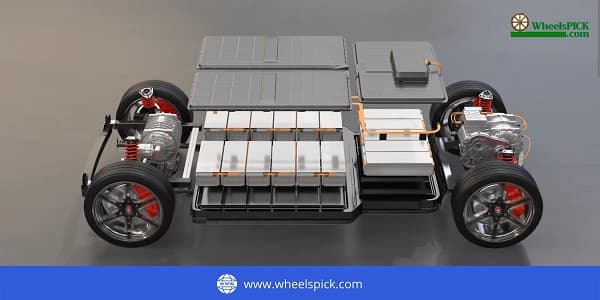
There’s no secret that electrical motors are a Godsend because of their simpler and highly durable construction next to combustion engines with many moving parts.
But the truth is, the extent or limitations of EVs power come from the batteries than the motor itself. If the battery’s health is maintained, it will deliver optimized power levels that are proportional to the energy capacity, if not minutely lower.
But the drivetrain can’t demand and acquire all energy at once. For instance, if we power two EVs with the same motor but one with larger batteries, it will generate and emit maximum output, and that’s because when the battery pack is larger, the energy-flowing power is quicker than a smaller version.
Do All EVs Have Fast Acceleration?
To put it straight, no two gas-powered cars are equal, and the scenario is no different with electric vehicles. For instance, one would be in awe of the Tesla S vehicle’s performance and shocking speed, but that’s also due to Tesla fast improving technology, intricate engineering, and top-notch specifications.
Now, if we look at the other end of the pole, we can compare Nissan Leaf or Chevrolet Belt, which can rev from 0-60 within 6.5-7.4 seconds, which varies vastly from the Tesla mentioned above. Generally, EVs as such come with mere and vast differences of a few seconds, but the same distinctions persist when EVs and gas-powered vehicles are compared too.
For example, the Toyota Camry takes around 8 seconds to accomplish the same chore. When comparisons are made with one integral focus, we will see that EVs are generally much faster than gas-powered cars. Some EVs are at the lower spectrum but still quite fast and pleasing to the drivers.
The technology is such that they have embedded advantages over traditional cars regarding speed and torque.
Why Do Electric Cars Have Such Good Grip?
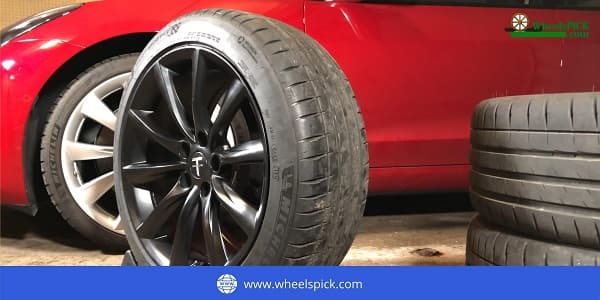
There are two important reasons for this phenomenon. The first is that EVs have chunkier and wider tires. For instance, Tesla makes tires at around 21″ rather than the generic 19″; thus, they exhibit greater control over the ground as most of the rubber touches it, enhancing grip and traction.
The second reason for this feature is that EVs have advanced traction-controlling mechanisms compared to traditional cars. The torque exhibited by EVs is, thus, constant; hence the computer calculates the torque rate that the wheels receive, which eventually prevents spin-outs.
Moreover, we experience slight or enhanced jolts, which affect the traction in gas-powered vehicles, unlike EVs that don’t possess gearboxes and, thus, don’t require shifting.
FAQs (Frequently Asked Questions)
Q1. How Do EVs Accelerate So Fast?
A) EVs utilize single gear to deliver full torque for all speeds, thus accelerating faster than internal combustion vehicles.
Q2. Why Do EVs Have Instant Torque?
A) EVs utilize electric currents that pass through magnetic fields and generate needed forces to operate the armature and set the car in motion.
Q3. Are EVs Faster Than Gas-Powered Cars?
A) EVs aren't always necessarily faster than gas-powered ones. They can reach 30 or 50 mph quicker than gas-powered, although their top speeds are lower.
Q4. What Are Some Disadvantages of EVs?
A) EVs require rare metals for their batteries and can be pretty expensive.
Q5. How Do EVs Have Higher Horsepower?
A) EVs use more horsepower as they have lower functioning and moving parts; hence, they have higher efficiency.
Q6. Why Don't Electric Cars Come with Gears?
A) In EVs, various gear sizes offer varying speeds and torque by simultaneously managing the engine's spin within the scopes of its power band. As a result, EVs develop the highest torque even from a motionless position and can keep a coherent rev too.
Q7. Will Gas-Powered Cars Vanish?
A) Many countries are banning gas-powered cars, but this conversion will take time as there's still much to resolve.
Q8. How Long Do EV Batteries Last?
A) EV batteries last around 15-20 years if properly maintained and taken care of.
Conclusion
Now, wasn’t that worth the read? We bet! It’s always fascinating to know more about these upcoming world-changing innovations. Moreover, the most basic question potential clients and intrigued individuals always ask is – why do electric cars accelerate faster? Well, now you know!
There’s no denying that the world is changing for the better, and EVs have a significant role. Electric vehicles aren’t just eco-friendly but cost-effective for the longer run, convenient and immense pleasure, especially for those who love a bit of adrenaline and rush while driving. Of course, we all want a sustainable future, but thankfully, nothing’s stopping us from having some fun while we’re at it!

